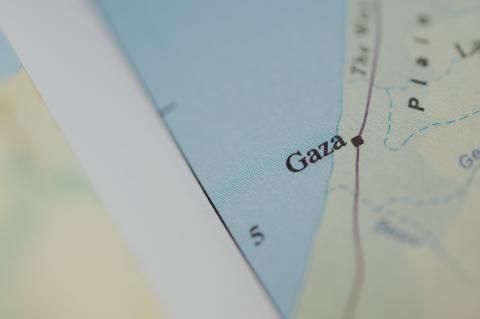The Vietnamese, in their battles with US forces, used to talk of the need to 'hug the belt', or to engage so closely with US ground forces that the Americans' overwhelmingly superior firepower would be blunted through fear of hitting their own men.
In Syria, the opposition has largely 'hugged the belt' of the civilian population to try to blunt the regime's advantage in firepower and win international sympathy when it doesn't. The regime, though, is not overly concerned with minimising harm to civilians, so the net effect is the death of tens of thousands of non-combatants.
This is one reason why the issue of humanitarian aid to besieged areas can be trickier than it may at first seem. The regime is unlikely to countenance providing succour to its enemies, and the UN and its agencies have no real way of knowing who is a fighter and who isn't.
Humanitarian organisations worry about feeding starving people, treating the sick and injured, and evacuating people who wish to be evacuated. But even acts as seemingly straightforward as allowing humanitarian access (Nick Bryant yesterday covered the UN's struggles in this regard) can, if not handled correctly, be viewed by one side as rewarding the other, as this article about the recent evacuation from Homs shows.
This conundrum is likely to deepen in coming months. As the weather improves and the diplomatic outlook worsens, the need for humanitarian aid will increase owing to even more fighting. The abandonment of the last round of the Geneva II talks before it even started was a good indicator that the regime believes it has the military advantage and doesn't need to talk about a transitional government as a precondition for tackling other issues. [fold]
The obvious riposte by the opposition is to put more military pressure on the regime in order to convince Damascus that it can never generate enough combat power to win decisively. There are signs that the opposition is trying to strengthen its military structure: the leader of the Free Syrian Army, Brigadier Salim Idriss, has been sacked (or 'democratically removed') and replaced by a 'fighting rebel' operating in the south of the country. The new chief of staff is from the north, an effort to present as unified a front as possible.
The fact that the new commander is operating in the south suggests a return to a Damascus-focused strategy. Earlier plans to defeat the regime were based on increasing the direct military threat to Damascus, considered the regime's vital ground.
This strategy may suit foreign powers hoping to help topple the regime but wary of association with Islamist radicals among the armed opposition. Radical jihadis are fewer on the ground in the south, which theoretically makes control of any weapons handed over to southern forces more secure. Jordan has allegedly been supportive to a degree of US efforts to train 'moderate' forces, and this WSJ article presages the provision of more advanced weaponry to opposition forces fighting Assad'.
Yet for all of this restructuring and claims of re-arming, local truces negotiated in areas around Damascus show how the Assad regime continues to pressure the opposition's major weakness: unity and local support. If the government can provide food and basic services without UN intervention after having laid siege to areas for months, then war fatigue among the local population may make it difficult for fighters to move into the area or for local opposition forces to resume fighting. On the other hand, if the fighters see it simply as an operational pause, the regime's strategy will have been for nought.
In Syria nothing, not even humanitarian assistance, is straightforward.
